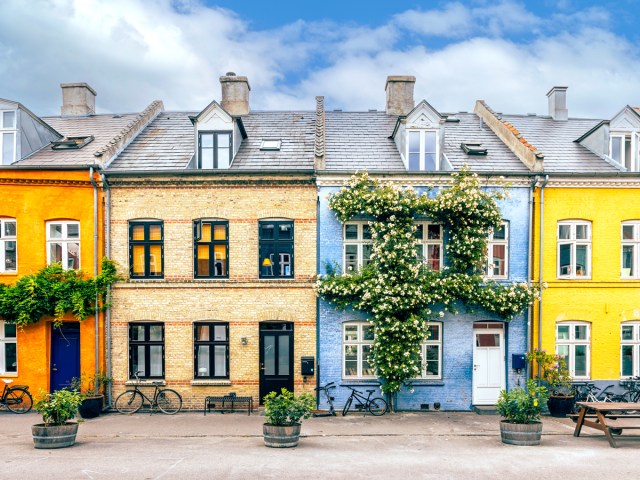The planet is home to 44 landlocked countries — ones entirely surrounded by land borders — but just three of them boast a far more unusual claim to fame. These countries are known as enclaves, and they aren’t just landlocked — they are located entirely within the territory of another state. Discover the fascinating histories of the world’s only three enclave countries.
San Marino

The Republic of San Marino was established in 301 CE, making it the world’s oldest-surviving constitutional republic. This microstate sits on the northeastern side of the Apennine Mountains in northern-central Italy, encompassed by the regions of Emilia-Romagna and Marche. Home to 33,000 permanent residents and covering an area of just 24 square miles, San Marino is also one of the smallest countries on the planet. The official language of this enclave is Italian.
According to legend, San Marino was founded when Saint Marinus (from whom the country derives its name) moved from Rab Island in present-day Croatia to Mount Titano and attracted a group of followers. While there, he performed a miracle and was given Mount Titano by its legal owner; he subsequently bequeathed it to the community upon his death. Historically under the political control of the Pope, San Marino first started to move toward independence in the 1300s. In 1463, the Pope awarded independence to the towns of Fiorentino, Montegiardino, and Serravalle in return for helping him defeat the Malatestas. These additions marked the country’s borders, which have been unchanged ever since.
Despite its miniature size, San Marino has huge touristic appeal. The namesake capital city sits atop Mount Titano and is inscribed on the UNESCO World Heritage List. It’s notable for its medieval walls, cobblestone streets, and Three Towers — defensive bastions dating back to the 1200s and perched on Mount Titano’s three peaks. Those wanting to delve into the state’s history and culture can do so at the Museo di Stato and Modern Art Gallery. Meanwhile, food and drink lovers will find gelaterias, pizzerias, seafood restaurants, and wine bars scattered around the country’s charming streets.
Lesotho

Lesotho, officially known as the Kingdom of Lesotho, is a mountainous country that’s entirely encircled by South Africa. Occupying an area of 11,720 square miles, this high-altitude territory was inhabited by a tribe of hunter-gatherers called the Khoisan beginning during the Neolithic Period. By around 500 CE, Bantu-speaking people arrived after a mass migration from West Africa and were later followed by Sotho-Tswana peoples. King Moshoeshoe I, the country’s first monarch, united the land that was then known as Basutoland under one rule in 1822. Just over two decades later, Moshoeshoe agreed to a treaty that made Basutoland a British protectorate.
A few more twists were to come before Basutoland eventually became Lesotho. It was annexed by the British-governed Cape Colony in 1871, but, after an inability to control revolts, the territory was returned directly to the British Crown in 1884. Full independence came in 1966, when Basutoland was renamed the Kingdom of Lesotho with King Moshoeshoe II as the head of state.
Today, Lesotho — nicknamed the “Kingdom in the Sky” — is famous for its breathtaking mountain landscapes. Visitors have no shortage of opportunities to hike and trek to mountaintops, across lush rolling pastures, and around national parks. At 11,424 feet, Thabana Ntlenyan is the highest point in the country and the tallest mountain in southern Africa.
Other interesting sights in the country include the ruined hideout of King Moshoeshoe I in Thaba Bosiu, near the capital city of Maseru, and Mount Qiloane, which is sacred in Basotho folklore. Visitors to Lesotho will also have the chance to indulge in cuisine which has been influenced by both Indigenous peoples and European settlers. The main staple is papa, a thick maize porridge, served with a bean, meat, or vegetable stew. To savor it like a true local, eat it by hand rather than with cutlery.
Vatican City

Located 140 miles south of San Marino is Vatican City. Officially called Vatican City State, this walled nation is entirely surrounded by the city of Rome. It is the headquarters of the Roman Catholic Church and the home of the Pope, who serves as both the bishop of Rome and leader of the Catholic Church. Occupying only 0.17 square miles, the Vatican is also the world’s smallest independent state.
For over a millennium, up until 1870, the Pope held sovereignty over the vast Papal States. They were made up of territories in central Italy and included the modern-day regions of Lazio, Umbria, Marche, and parts of Emilia-Romagna. This changed during the movement for Italian unification, when Rome came under the rule of Piedmont-led forces. The popes refused to accept the new political reality and retreated to live in the Apostolic Palace, the official papal residence. The situation was eventually resolved in 1929, when Benito Mussolini signed the Lateran Treaty on behalf of the Holy See and the Kingdom of Italy. It established the Vatican City as a city-state and gave special status to Catholicism in Italy.
In addition to being the center of Catholicism, Vatican City is a treasure trove of art and architectural masterpieces. Some of the most revered include the enormous St. Peter’s Basilica and the pillared Apolistic Palace, which houses the Vatican Museums. The Sistine Chapel hosts Michelangelo’s intricate ceiling frescoes, while elsewhere around the museums are works by Botticelli, Carvaggio, and Botecelli, among others. In 1984 the Vatican City became the first country to be inscribed on the UNESCO World Heritage List.





















